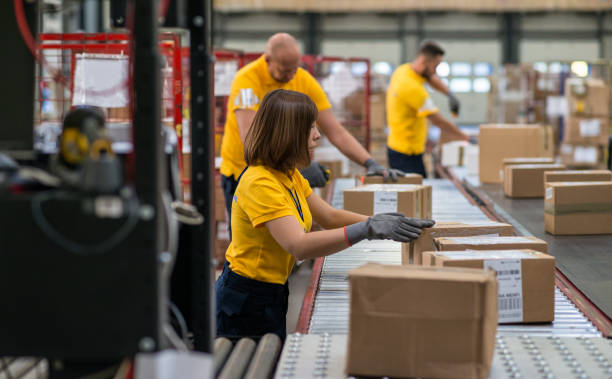Understanding your average order value (AOV) matters when it comes to knowing your customers and your business. Not only that, but it is important to make sense of this figure to see if it can be improved. You want to understand everything about your customers buying decisions as well as your profit margins.
How can you increase the average sale? Why do your customers buy certain products, and do they want similar product add-ons and upsells? These are all good questions to start tackling.
“Instead of starting with a tool or tactic, do your homework first.”
Table of Contents
Toggle
-Dennis Moons, Store Growers
Investing in marketing is one thing but investing in knowing what products are already selling well and improving upon them may be more beneficial. As the saying goes, “if it isn’t broken, why fix it?” Today we’re going to discuss average order value, why it matters, and how to improve this figure.
WHAT IS AVERAGE ORDER VALUE
The definition of average order value means the average price your customers spend on your products within a given month, year, etc. It’s the median or middle value. We calculate this value by the number of orders within a given period with the total revenue.
The AOV determines the financial stability of your business. It directly correlates how much revenue and profit you earn consistently. Calculating this on a month-to-month basis will help predict and allocate your business priorities with more educated guesses.
So, you’ve done all the work to market and get traffic to your site, congrats! You’re now getting sales and you’re bringing in more help on to assist you with the workload. Now, it’s time for some financial housekeeping and intelligent projections.
WHY IS AVERAGE ORDER VALUE IN ECOMMERCE IMPORTANT
Understanding your AOV in eCommerce is important because it’s a reference point for predicting revenue while also offsetting business costs.
For example, how do you know how many people you can bring on? What do the numbers say and what can you really afford? What is your profit minus utilities, shipping, and administration costs? Are there other costs involved you haven’t thought of yet?
Obviously, sales will fluctuate from month to month, so being meticulous in this process encourages more logical reasoning and clarification. Calculating future business isn’t an exact science, but leaving it up to fate or uneducated guesses will quickly thwart your business efforts. You need a sensible working foundation to go from zero to hero!
Whether you’re looking to hire more employees, add custom packaging, or how to invest in other areas of your business, the AOV is a guide. Knowing what’s coming in and what’s going out is a key indicator of a company’s success, or future insolvency.
However, understanding your average order value is only one part of the puzzle. You want to understand the buying behaviours and consumer demographics around your products. This means age, gender, income, etc. More on that here.

Whether you’re looking to hire more employees, add custom packaging, or how to invest in other areas of your business, the AOV is a guide. Knowing what’s coming in and what’s going out is a key indicator of a company’s success, or future insolvency.
However, understanding your average order value is only one part of the puzzle. You want to understand the buying behaviours and consumer demographics around your products. This means age, gender, income, etc. More on that here.
HOW DO YOU CALCULATE YOUR AVERAGE ORDER VALUE
Calculating your average order value is easy. If you want to understand your monthly AOV, simply divide your total revenue for the month by the total number of orders.
Ex: Revenue in June 2021 = $15,700
Number of orders = 560
£15,700/560 = £28.03
Your monthly average order value = £28.03
Now, if you want to understand your annual AOV, simply divide your total revenue for the year by the total number of orders.
Ex: Revenue in 2020 = £123,478
Number of orders = 3,406
£123,478/3,406 = £36.25
Your annual average order value = £36.25
Of course, AOV doesn’t mean all the revenue is profit, right? You still need to factor in your order fulfilment and shipping costs, as well as others. So, you also want to know your average order cost to properly audit your fiduciary responsibilities in relation to your business.
WHAT IS AVERAGE ORDER COST?
Average order cost means subtracting the business costs of supplying that product, or products. This is what the cost is to you on every order. If you have multiple products and varying business costs, find the middle value to determine your average order cost.
When determining your actual profit, there may be many deductions. Business liabilities aren’t only limited to shipping costs. If you hire employees to pick and pack your items, that’s an hourly cost. How much is their time worth for picking and packing time? If the hourly wage at £10 an hour and it takes 30 minutes for an employee to package and ship your product, this reduces your profit by £5.
With dozens or even hundreds of orders each day, you can see how quickly your profit margin sadly widdles away. This is where 3pls come into play and help save you more time and money, adding incrementally better cost-benefit ratios.
Every business is different and there are several factors to determine a correct assessment of your average order cost. Make sure you do your due diligence to guarantee healthy revenue calculations.

Once you know your average order cost as well as the average order value you are more fiscally responsible as a result, and the universe will reward you for it.
HOW DO YOU INCREASE YOUR AVERAGE ORDER VALUE
Increasing your average order value is relatively simple. There are several useful strategies you can implement to steadily increase your cash flow. This is done through offering more value, more options, and more creative hustling.
5 WAYS TO INCREASE AVERAGE ORDER VALUE
I find that these are the 5 most valuable ways to increase your average order value for eCommerce retail selling.
1) UPSELL
By offering complimentary products with the main product you’re selling, you can increase your average order value. For example, if you’re selling running shoes, perhaps you could include athletic socks or sweatbands. You’re now offering more options for the customer, encouraging them to think practically about items they may need on top of another.
ACCORDING TO SUMO, UPSELLING INCREASES REVENUE BY 10-30% ON AVERAGE
2) BUNDLE PRODUCTS
Bundling different products together encourages your customers to spend more money, thus increasing average order value. A good tip is to bundle together the hottest products with slower selling complimentary lines for a lower combined value. Give the customer a “deal” while increasing AOV and clearing slow moving stock lines. To keep the running shoe example, try putting your best shoe with your worst sock. Watch as the hot product attracts those “deal” focused customers who see the sock as “too cheap to pass up on” and convert. Continue to sell the products individually to ensure best results.

3) CROSS-SELL
Adding a “you may also like” option may persuade customers to get a complimentary product they may haven’t considered before. This may seem similar to upselling; however, the funnel layout and product type slightly differ. An upsell more directly relates to a product, whereas a cross-selling is “partly related items.” For example, this might be a knife set if someone was purchasing cooking pans.
4) FREE SHIPPING
Free shipping always feels like a bargain to customers. In fact, 90% of customers view free shipping as the top incentive that encourages them to shop online more often.
5) OFFER E-GIFT CARDS AND VOUCHERS
One of the best ways to increase sales is to encourage more customers to buy from you. If you have ravings fans in your business, chances are those current customers know other people who will also be interested in what you offer. By offering vouchers and e-gift cards for birthdays, celebrations, etc., you can raise revenue. Learn more about offering e-gift cards for your eCommerce store here.
CONCLUSION FOR AVERAGE ORDER VALUE
Understanding your average order value is mandatory for businesses of all sizes. Fiscal responsibility is congruent to longevity in business. Having a keen understanding of your products, your customers, and how to increase your average order value will significantly improve your bottom line. It will help you to grow and add more capacity. It can help with customer retention, inventory management, and it can even help with costs associated with outsourcing your order fulfilment. Should you have any questions about how Selazar can help you on your business journey, let us know.
